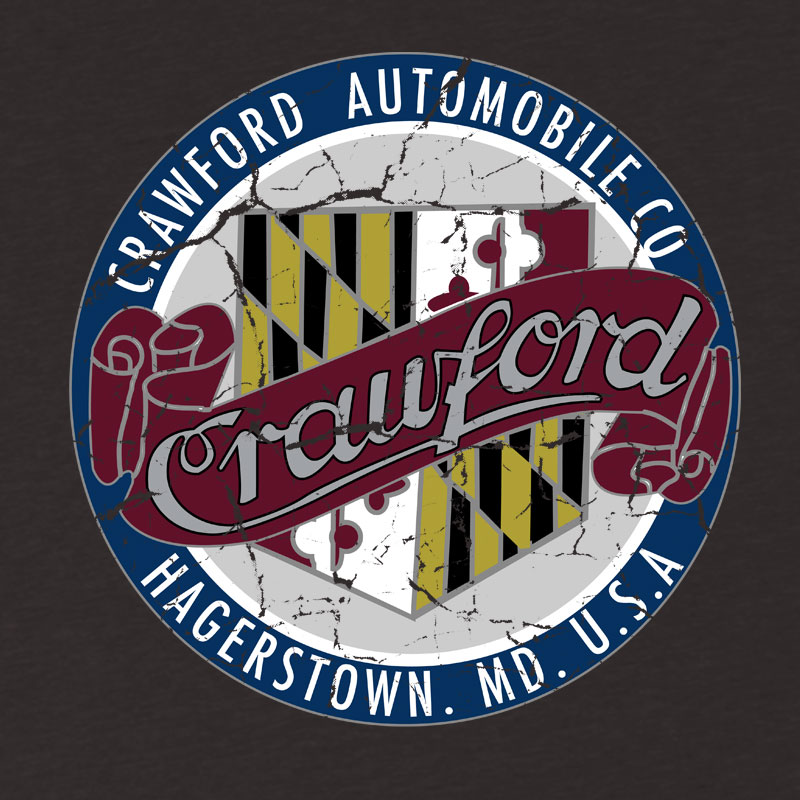The Crawford Automobile Company was founded in Hagerstown, Maryland, in 1902 by Samuel H. Craig and advertised itself as "The Crawford: Built for Service." The company began producing cars in 1905 and quickly gained a reputation for building sturdy, reliable vehicles. The early Crawfords were chain-driven and used four-cylinder engines produced by Waukesha Motor Company. In 1907, the company introduced its first six-cylinder model, which was also chain-driven. However, by 1909, the company had switched to shaft drive. In 1911, the company introduced a new model with a unique feature: a transaxle. This design placed the gearbox and drive shafts directly over the rear axle, improving weight distribution and allowing for a lower center of gravity. The transaxle was used on Crawfords until 1914. Crawford cars continued to evolve over the next decade, with models featuring brass trim, wooden artillery wheels, and Continental six-cylinder engines. The company also began to offer more luxurious features, such as electric lighting and self-starters. In 1923, the Crawford Automobile Company was purchased by the M.P. Moller Pipe Organ Co. of Hagerstown, who continued to produce cars under the Crawford name until 1927. During this period, the company introduced a sporting version of the Crawford called the Dagmar. However, sales of the Crawford cars declined, and in 1927, M.P. Moller sold the rights to the name to the Moon Motor Car Company.

